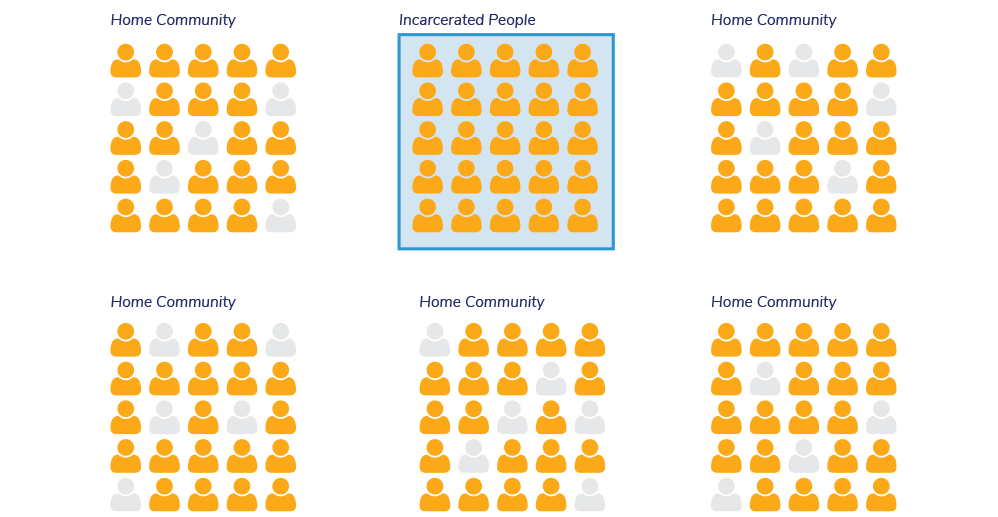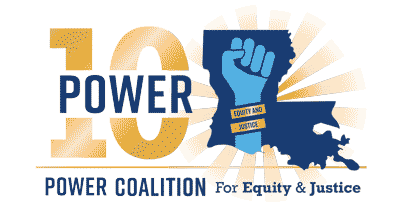Redistricting Resources
Redistricting Coffee Chats
Power Testimony Guide
Quick TIPS
- Understand the process and rules for testifying
- As referenced in NAACP LDF’s Louisiana Redistricting What to Know and How to Engage Guide you will only have two to three minutes. Use the back of these notecards to prepare your testimony.
- You might be questioned. Know if there are opposing viewpoints and be able to defend your position.
- If you don’t know the answer to a question, say you “don’t know” but you will get back to them with the answer.
- Public testimony should include quantitative (numbers, data) and qualitative (stories) evidence
- Make your testimony personal and community-centered
- Share what negative outcomes could happen if maps change or remain the same
- Aim for large community turnout to support testimony
- Be concise
Tell Your Authentic Story
Example: Good Evening. Chairman My name is ________ and I am a member of the ___ community and______ parish. I have been a resident of this community for ______ years. I am here with my community members and larger coalitions. I urge you to keep my community together. My goal for this redistricting process is for our elected officials to pass fair and equitable maps that do not deflate my power in the election process.
Power Tips
- Share what makes your community unique and why is that an important factor that should not be separate out of your community
- Share the culture of the community. Describe the people, commonalities, history. What do you all value?
Define Your Community and Its Concerns
Example: I live in the ________ it borders ________ and _______. Here are some assets I would like to keep in this community.
Power Tips
- Define your community boundaries and elaborate support or opposition to proposed maps
- Explain your map and the boundaries of your community
- What are the streets and markers in your community
- What are the significant landmarks: rivers, bayous, parks, shopping areas, or historic sites, etc.?
- What are the gathering places: shopping districts, schools, community centers, religious places, and social service agencies?
- Do the current political district boundaries divide your community? Or do they keep your community together?
- What issues need attention from the government? What community projects need resources? Are there examples of elected officials ignoring our concerns?
Don’t Forget The Data
After addressing these question, explain your community’s map and the boundaries and gathering places that define the neighborhood map
Power Tips
- What are the streets or boundaries that mark your community borders on each side?
- What are the significant landmarks: rivers, parks, shopping areas, or historic sites, etc.?
- What are the gathering places: shopping districts, schools, community centers, religious places, and social service agencies?
- Do the current political district boundaries divide your community? Or do they keep your community together?
- Is there data we can present that strengthens our testimony (Number of people in our community, % POC, income levels, distance from hospitals, lack of greenspace)
Power Glossary
Drawing boundaries of political districts in a way that gives one political party an unfair advantage over its rivals or that dilutes the voting power of members of ethnic or linguistic minority group

Majority-Minority
This is a district where one or more racial, ethnic, and/or religious minorities make up a majority of the local population
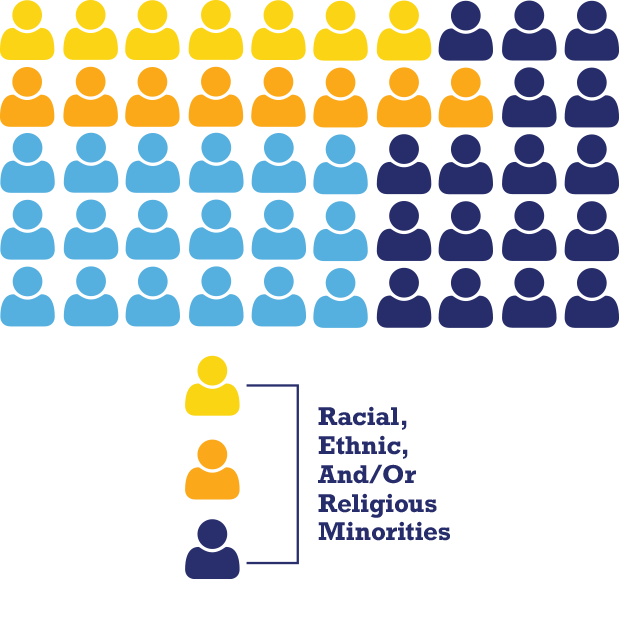
Cracking
Diluting the voting power of a group of voters across many districts
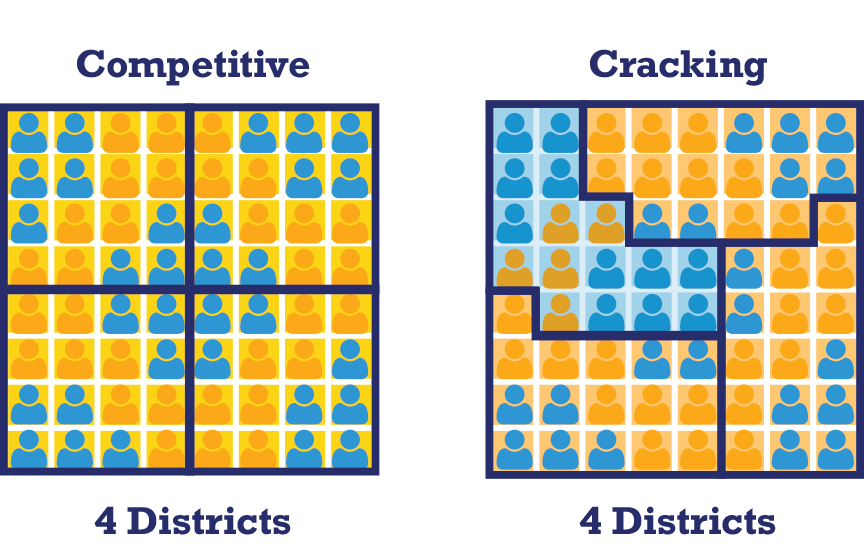
Packing
Concentrating a group of people in one district to reduce their voting power in other districts

Efficiency Gap
The difference between the two parties’ wasted votes, divided by the total number of votes. In a highly competitive district, the efficiency gap would be zero. In a district with severe “packing” of one party, there would be a high efficiency gap because the winning party would have wasted votes that are not needed to win the district.
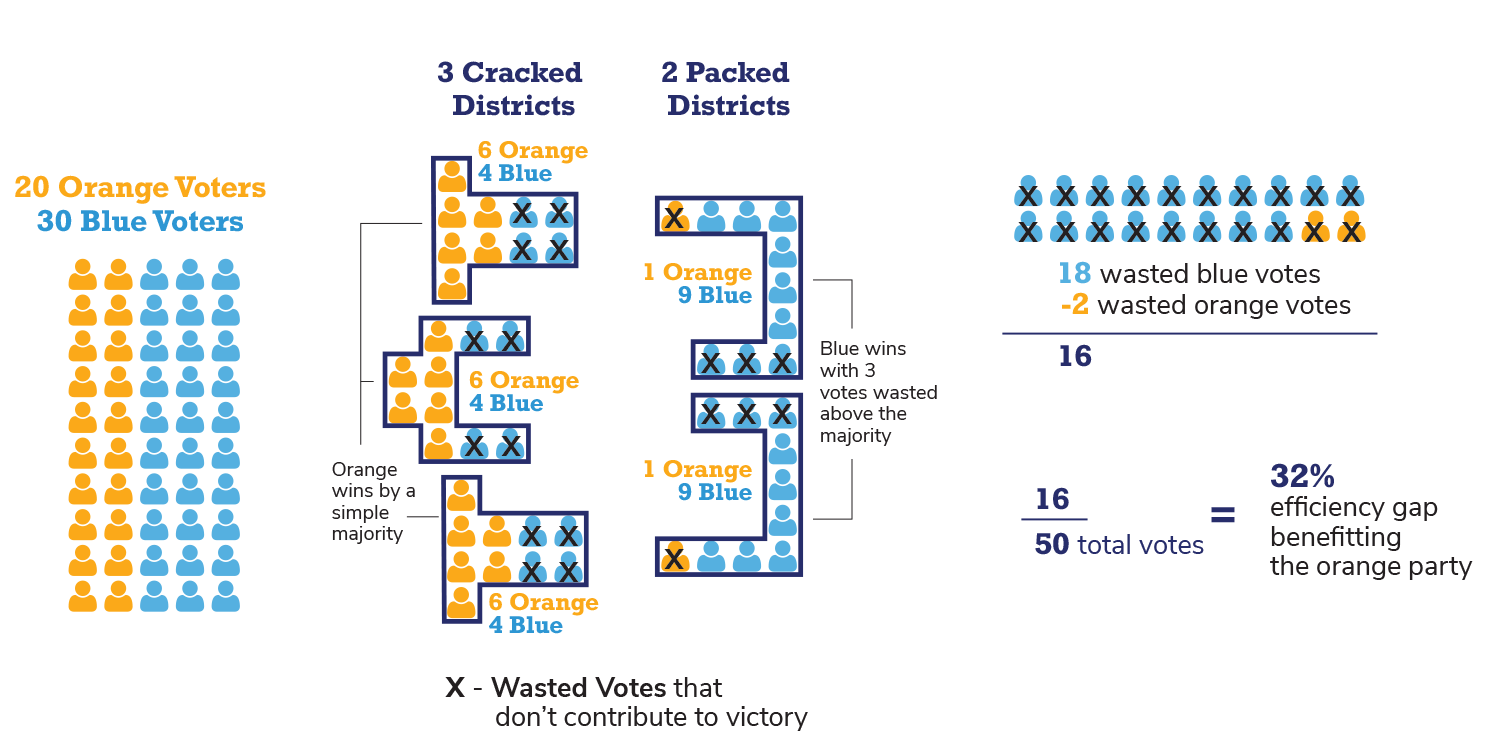
Vote Dilution
When a groups’ voting power is reduced because they have been either been “packed” into a limited number of districts or their voting power has been “cracked” and dispersed across several districts
Prison Gerrymandering
Prison gerrymandering is the act of counting incarcerated people in the jurisdiction where the prison is located instead of their home community. Incarcerated people do not have the right to vote in Louisiana, creating disproportionate representation for people that live in districts with prisons.
